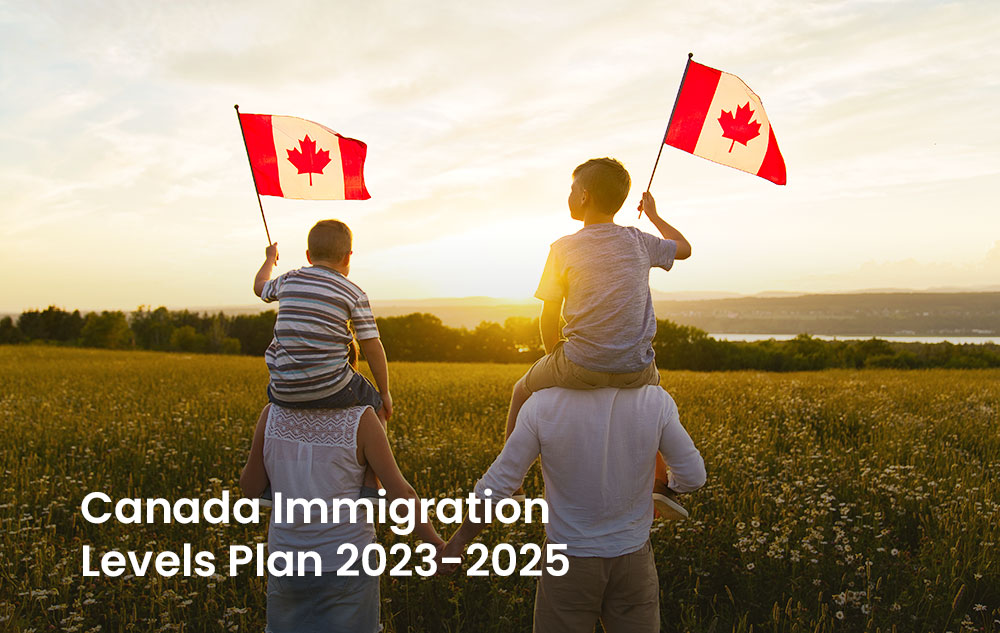

November 1, 2022-Toronto -Among significant economies, the Canadian economy recovered from COVID-19 one of the quickest. However, the country is currently dealing with a severe labour shortage that creates uncertainty for employers and employees. The 2023–2025 Immigration Levels Plan for Canada was announced today by the honourable Sean Fraser, Minister of Immigration, Refugees, and Citizenship. To manage the social and economic issues Canada will confront in the subsequent decades, the plan supports immigration as a tactic to assist businesses in finding workers and to attract the skills required in essential areas, including health care, skilled crafts, manufacturing, and technology.
Immigrate To CanadaThe number of immigrants that Canada expects to admit over the next three years is determined by the Immigration Levels Plan. Canada’s Immigration Levels Plan 2023-2025 has been made public recently. In 2021, Canada welcomed more than 405,000 immigrants, breaking its previous record. This year, it hopes to permit more than 430,000 immigrants to enter Canada in 2022, according to IRCC. This goal is expected to increase to 465,000 more permanent residents by 2023. (PRs). In 2024 and 2025, respectively, Canada plans to accept 485,000 and 500,000 more immigrants.
Online Canadian Immigration Assessment FormMost new permanent residents enter through programs for certain economic classes, such as those in the Express Entry system or through Provincial Nomination Programs (PNPs). For Express Entry landings of principal applicants, dependents, and spouses, the following targets will increase:
2023 : 82,880
2024 : 109,020
2025 : 114,000
The PNP will continue to be Canada’s top program for admitting immigrants from lower socio-economic backgrounds, and its targets will also rise to:
2023 : 105,500
2024 : 110,000
2025 : 117,700
The foundation of Canada’s immigration policy is family reunions. Since the end of World War II, Canada has worked to welcome immigrants to boost its economy, reunite families, and out of compassion and humanitarianism. Under Canada’s Immigration Levels Plan, families make up the second-largest group of immigrants accepted.
Every year, Canada accepts more than 100,000 immigrants under family sponsorship. The Spouses, Partners, and Children Program at IRCC (previously CIC) accepts around 80% of these immigrants, while the Parents and Grandparents Program accepts the remaining 20%.
Family reunification is another goal of IRCC. Family class sponsorship is the second-largest permanent resident class included in the Immigration Levels Plan after economic class programs. Applicants are sponsored for permanent residence under family-class immigration programs by a spouse, partner, kid, or another family member. Under the Spouses, Partners, and Children program, Canada will continue to aim to accept around 80,000 new immigrants yearly. The Parents and Grandparents Program will have higher targets starting in 2023, increasing to 28,500, 34,000 in 2024, and 36,000 in 2025.
The Immigration Levels Plan also allots funds for refugees and humanitarian-class immigrants. Refugees who are fleeing dangerous situations in their native countries are frequently granted asylum in Canada.
Canada now has high humanitarian class goals because of its ongoing work to finish numerous campaigns, such as accepting about 40,000 Afghan refugees. Before declining to 72,750 in 2025, the overall refugee class aim will be somewhat more than 76,000 new landings in each of 2023 and 2024. Similar trends can be seen in the humanitarian class target, which drops from about 16,000 in 2023 to 8,000 in 2025.
The creation of a solid foundation for ongoing economic growth, the reunification of families with their loved ones, and the fulfillment of Canada’s humanitarian obligations are achieved through this plan, which further solidifies Canada’s position as one of the top talent destinations in the world.